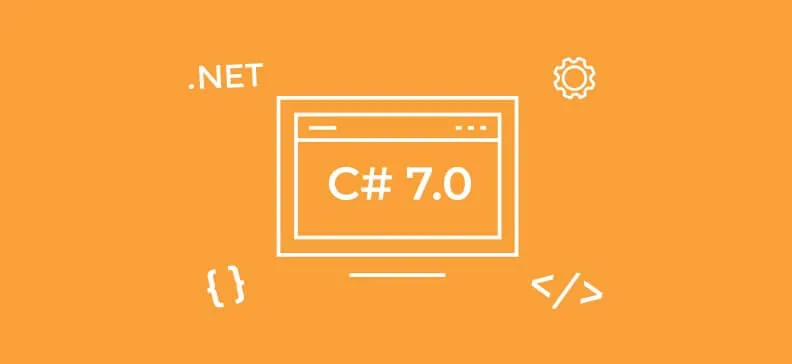
Back in the day when I was a young developer, I was using output parameters. Then I figured out it is somewhat complicated to test functions with output parameters, and that their use is clunky at best. Also, out parameters don’t work with async function, because of CLR limitations. In general, I liked them less and less. So, I started writing DTOs – Data Transfer Objects, to avoid this kind of situation and keep my design as clean as possible. Then I started writing a lot of DTOs, and I mean a lot of DTOs. In fact, they were affecting the cleanness of my code now. Especially when I had to group values which are really not having much in common. This was happening usually on DAL modules. All of this seemed like a lot of overhead just to pass some values around. And then, I discovered Tuples.
Definitions
Tuples come from set theory, where a tuple is defined as a finite ordered list of elements. Unlike ordered lists, the same element can appear more than once inside the tuple. They can pretty much look like this – (a, b, a). Still, the order is important. Some other definitions say that tuples are ordered multiset. To sum it up in few points:
- A tuple is used to describe some form of the finite sequence of elements
- An element can appear more than once in the tuple
- The order of elements in the tuple is important
In computer science, the form of tuples and the way that are used varies from one programming language to another. Tuple in Pyton is an immutable list, in Scala it is used to mix different types, and in functional languages tuples are used for pattern matching. It is debatable, but JavaScript object can be considered a tuple.
Tuples in .Net
In the .NET world Tuple is a data structure with a specific number and sequence of elements, first introduced in .NET 4.0. It is important to notice that Tuple is a structure, ie. value type and that it’s fields are public and mutable. Here is an example:
var person = new Tuple<string, string, int>( "Nikola", "Rubiks Code", 30);Console.WriteLine("{0} has a blog called {1}, and he is {2} years old", person.Item1, person.Item2, person.Item3);
As mentioned before, Tuples can be used to return multiple values from the function, without using out or ref parameters, but that is not their only use. They can be used to pass multiple values through the one function parameter. Also, since they have value equality, Tuples can be used if you need a dictionary with multiple keys or list with multiple values on each position.
Still, before C# 7.0, using Tuples was not so natural for many software craftsmen. They seem a bit stodgy and you always had to remember which value has been assigned to which item of the tuple. The code was cleaner, in a sense that there were no more DTOs as before, but tuples definitely added a lot of mess. Also, they were not applicable to the public API, for the same reasons.
Tuple Types and Tuple Literals in C# 7.0
In order to make Tuples more friendly, the guys at Microsoft introduced some new features in C# 7.0. These allow us to define function return values in a more understandable manner. For example, our function from before can now be presented like this:
private (string, string, int) GetNameBlogAndAge(){ return ('Nikola Zivkovic', 'RubiksCode', 30);}
We can see it is a little bit easier to understand what is going on now, but still, if you want to access those values, you will have to do something like this:
var nameBlogAge = GetNameBlogAndAge();Console.WriteLine("Name is: {0}", nameBlogAge.Item1);
So, we are again accessing the tuple element using confusing “Item1” name. But this is also upgraded in the new version of C#. Now we can name each field in the Tuple like this:
private static (string name, string blog, int age) GetNameBlogAndAge(){ return ('Nikola Zivkovic', 'RubiksCode', 30);}
Or assign element names inside the literal itself, like this:
private static (string, string, int) GetNameBlogAndAge(){ return (name: 'Nikola', blog: 'RubiksCode', age: 30);}
So, consuming a Tuple can be done in a more natural way:
var nameBlogAge = GetNameBlogAndAge();Console.WriteLine("Name is: {0}", nameBlogAge.name);
Another thing that is also very useful is that tuples now can be used in deconstructing declaration. This is best shown in the following example:
(string name, string blog, int age) = GetNameBlogAndAge();Console.WriteLine("Name is: {0}", name);
This means that you can split a tuple into its elements and assign those elements separately to new variables.
Conclusion
Tuples solve a lot of problems that you had with DTOs and output parameters. Also, problems with its usability and naming are upgraded in C# 7.0. Frankly, it reminds me of JSON objects, and also some of the Typescript features. Remember how Typescript was presented as JavaScript for C# developers? It seems to me that now this change is pushing C# towards something that will remind us of JavaScript. Who knows, maybe these two currents will find middle ground in one unified solution.


